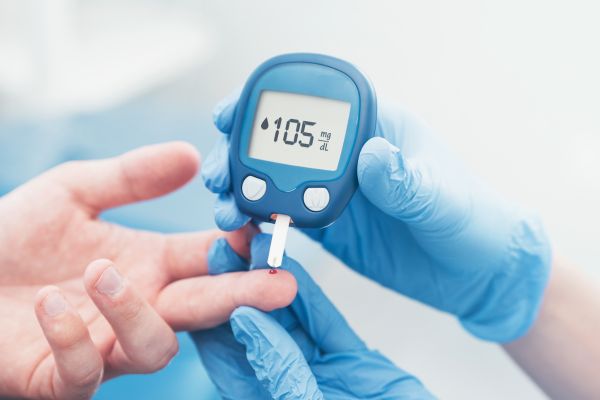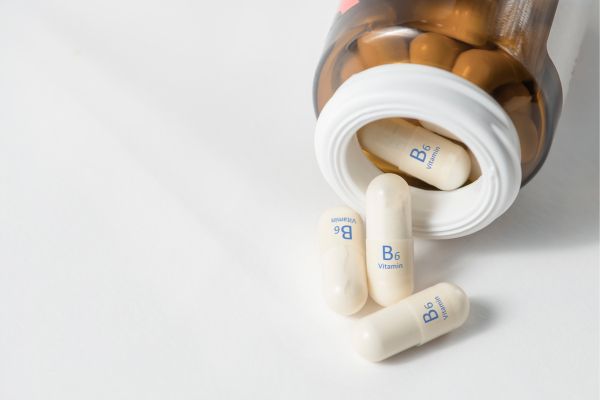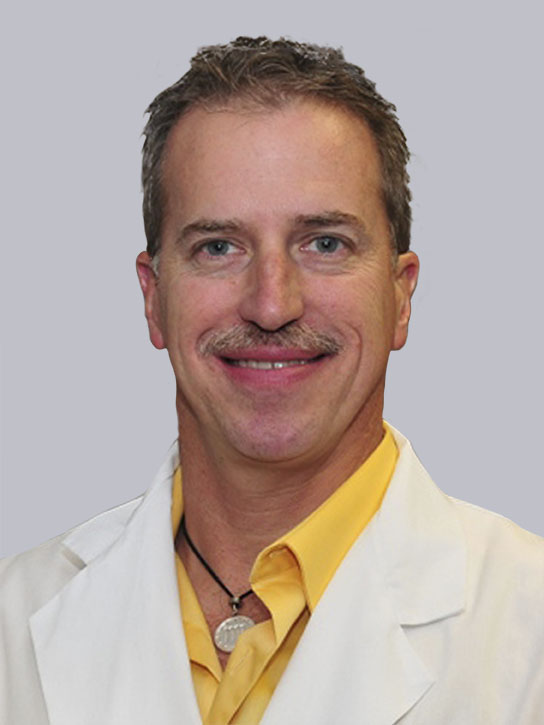Diabetes Management & Preventation
Diabetes Management Program
One of the most important aspects of well-functioning diabetes management programs is developing ways of monitoring diabetic patients to see how they are doing with the control of their disease. This includes methods for monitoring glucose control, dietary interventions to help maintain glucose homeostasis, routine surveillance of patients for signs of early sequelae of diabetes, such as kidney disease, eye disease, cardiovascular disease, neuropathic disease and podiatric problems, as well as dealing with the psychological issues that the difficulties of dealing with a lifetime of diabetes pose. The DiGiovanna Family Health and Wellness Center has programs to address each and every one of these issues.

Overall Numbers, Diabetes and Prediabetes
- Prevalence: In 2015, 30.3 million Americans, or 9.4% of the population, had diabetes.
- Approximately 1.25 million American children and adults have type 1 diabetes.
- Undiagnosed: Of the 30.3 million adults with diabetes, 23.1 million were diagnosed, and 7.2 million were undiagnosed.
- Prevalence in Seniors: The percentage of Americans age 65 and older remains high, at 25.2%, or 12.0 million seniors (diagnosed and undiagnosed).
- New Cases: 1.5 million Americans are diagnosed with diabetes every year.
- Prediabetes: In 2015, 84.1 million Americans age 18 and older had prediabetes.
- Deaths: Diabetes remains the 7th leading cause of death in the United States in 2015, with 79,535 death certificates listing it as the underlying cause of death, and a total of 252,806 death certificates listing diabetes as an underlying or contributing cause of death.
Diabetes in Youth
- About 193,000 Americans under age 20 are estimated to have diagnosed diabetes, approximately 0.24% of that population.
- In 2011—2012, the annual incidence of diagnosed diabetes in youth was estimated at 17,900 with type 1 diabetes, 5,300 with type 2 diabetes.
Diabetes by Race/Ethnicity
The rates of diagnosed diabetes in adults by race/ethnic background are:
- 7.4% of non-Hispanic whites
- 8.0% of Asian Americans
- 12.1% of Hispanics
- 12.7% of non-Hispanic African-Americans
- 15.1% of American Indians/Alaskan Natives
The breakdown among Asian Americans:
- 4.3% for Chinese
- 8.9% for Filipinos
- 11.2% for Asian Indians
- 8.5% for other Asian Americans.
The breakdown among Hispanic adults:
- 8.5% for Central and South Americans
- 9.0% for Cubans
- 13.8% for Mexican Americans
- 12.0% for Puerto Ricans.
Deaths
Diabetes was the seventh leading cause of death in the United States in 2015 based on the 79,535 death certificates in which diabetes was listed as the underlying cause of death. In 2015, diabetes was mentioned as a cause of death in a total of 252,806 certificates.
Diabetes may be underreported as a cause of death. Studies have found that only about 35% to 40% of people with diabetes who died had diabetes listed anywhere on the death certificate and about 10% to 15% had it listed as the underlying cause of death.
Cost of Diabetes
Updated March 22, 2018
- $327 billion: Total costs of diagnosed diabetes in the United States in 2017
- $237 billion for direct medical costs
- $90 billion in reduced productivity
After adjusting for population age and sex differences, average medical expenditures among people with diagnosed diabetes were 2.3 times higher than what expenditures would be in the absence of diabetes.
The numbers don’t lie, diabetes is a significant medical problem globally, and increasingly so every year. This ties hand-in-hand with the obesity epidemic, which continues to worsen as many parts of the world adopt the Western diet, high in saturated fats, simple carbohydrates and too many daily calories. The DiGiovanna Family Health and Wellness Center, and its affiliate, the DiGiovanna Institute for Medical Education and Research, have been working to eliminate the scourge of diabetes for the last 25 years. Through the development of programs and guidelines used to assist in regimented management of patients with diabetes, the development of programs to identify those patients with prediabetes or at risk for developing diabetes, and the participation in a multitude of ground-breaking clinical trials seeking to control, improve and even cure both types of diabetes, the DiGiovanna Family Health and Wellness Center provides a wealth of training, experience and education for our patients. Following, is a series of initiatives the DiGiovanna Family Health and Wellness Center has developed for diabetes.
Diabetes Control
Routine Blood Testing
The routine and scheduled monitoring of a patient’s blood glucose remains the mainstay of any program to ensure the proper treatment of diabetes. The DiGiovanna Family Health and Wellness Center teaches and encourages patients to test their own blood glucose levels at least daily, but as many times as their individual condition warrants. Efforts are undertaken to provide all diabetic patients with their own home glucose monitors and supplies for testing. Education is provided to the diabetic patient on how and when to test their blood glucose, to maintain those test results for physician review, what the results mean and what actions should be taken as a result of those blood glucose levels. Diabetic patients are also scheduled and encouraged to be seen on an every 3-4 month basis so additional blood testing can be performed, such as HgbA1C, fructosamine, C-peptide levels, insulin levels and GlycoMark to assess postprandial, or after meals, glucose levels. Occasionally, additional blood tests may be ordered to assess glucose control, such as the 2-hour or 5 -hour oral glucose tolerance tests (OGTT). Other blood tests will also be ordered to monitor other sequelae or complications of diabetes or other conditions that may affect diabetes control, such as lipid levels, complete blood counts, thyroid levels, vitamin levels, kidney tests and blood tests for inflammation which can detect early cardiovascular disease.
Routine Physical Examinations
The DiGiovanna Family Health and Wellness Center encourages diabetic patients to be seen and examined on an every 3-4 month basis so that examinations may be performed to monitor for signs of sequelae or complications of diabetes. Early detection and intervention are very important to prevent the progression of these complications. Diabetic patients are encouraged to get dilated eye examinations every year, foot examinations several times per year, cardiac examinations, abdominal examinations and vascular checks.
Continuous Glucose Monitoring (CGM)
A CGM device is a small device, only about 1.5 inches in size, which is implanted on top of the skin of the diabetic patient’s abdomen. The CGM is an electronic recording device which checks the diabetic patient’s blood glucose every 5 minutes over a period of 3-6 days. A diabetic patient may check their blood glucose 2 or 3 times per day, but the CGM can give over 250 readings per day. This provides the treating physician with the ability to see trends, such as days of the week or times of the day when a patient’s glucose may be getting too high or loo low. This enables the diabetic patient and their treating physician to make changes to the treatment or dietary regimen to achieve overall better control of the diabetic patient’s blood glucose levels. The DiGiovanna Family Health and Wellness Center has invested in this technology and recommends that all diabetic patients undergo CGM testing at least 1-4 times per year, depending on the severity of their diabetes. This procedure is completely non-painful, easy to apply and non-intrusive for the diabetic patient to wear.
Insulin Pumps and Closed Loop Systems (“Artificial Pancreas”)
Insulin pumps are devices filled with short-acting insulin, connected through a subcutaneous needle to a patient, which deliver a continuous and programmed flow of insulin. The diabetic patient may bolus, or administer an additional dose of insulin, at mealtimes, but still needs to constantly monitor their own blood glucose levels, and administer additional doses in insulin, when needed. Combining the CGM technology, described above, with an insulin pump, and allowing both devices to communicate and self-adjust the flow of insulin depending on the diabetic patient’s blood glucose would allow the diabetic patient much more freedom from their disease. Limiting blood glucose fingerstick checks and having intuitive technology to adjust the flow of insulin before the diabetic patient develops hyperglycemia or hypoglycemia greatly improves blood glucose control and frees the diabetic patient from the rigors and burden of frequent testing and adjusting. Because the system is relatively “closed loop” and functions similar to the diabetic patient’s own pancreas, hence the name “artificial pancreas.” The DiGiovanna Family Health and Wellness Center has been working with device manufacturers to bring this technology to their diabetic patients. Programs have been developed to identify appropriate patients, enroll them in an educational program to be able to work with their device, and work with insurance carriers for appropriate approvals on the equipment and supplies.

Dietary Interventions
WEIGHT LOSS PROGRAMS
Obesity has been well-known to be associated with Type 2 diabetes for decades. The exact mechanistic association between diabetes and obesity is believed to be insulin resistance, The DiGiovanna Family Health and Wellness Center can have certain blood tests done to assess a diabetic patient’s level of insulin resistance, such as insulin levels, C-peptide levels and a HOMA-IR blood test. Recent clinical research has discovered another, perhaps even more important, factor relating diabetes to obesity: inflammation. It has become fairly well-established among diabetic researchers that inflammation of the fat, or adipose, cells is the basis for insulin resistance, hence the cause of Type 2 diabetes. This inflammation of the fat cells, or adipositis, is intimately involved with the immune system, which mediates inflammation. At the present time, targets of therapy are to reduce the fat cells, which concerns weight loss, so the overall amount of inflammation is reduced for better blood glucose control. The DiGiovanna Family Health and Wellness Center has developed weight loss programs that really work. Attention is paid to not just controlling the diet in the short term, but actual and real lifestyle changes that lead to long-term weight control and the consequential improved control of blood glucose and the mitigation or prevention of the sequelae of diabetes.
Functional Nutrition and Complementary Medicine
It has been well-established that you are what you eat. For the diabetic patient, dietary intake becomes even more important because proper nutritional intake, caloric modification and an overall healthy lifestyle contribute to longevity and good long-term control of blood glucose. There are also many natural supplements which are known to improve the well-being of the diabetic patient. The DiGiovanna Family Health and Wellness Center has designed a Finctional Nutrition and Complementary Medicine program to address the needs and long-term goals of the diabetic patient. Led by Peter Roth, with over 25 years in the field, dietary education and nutritional supplementation are incorporated into the daily treatment of diabetic patients.


Psychological Aspects of Diabetes
Diabetes is a chronic, lifelong disease. Diabetes affects every aspect of the diabetic patient’s daily routine and lifestyle, including the need for daily blood glucose testing, dietary restrictions, exercise restrictions, alcohol restrictions, regular physician appointments and the restrictions that medical complications of diabetes pose on the diabetic’s lifestyle, such as blindness, dialysis, or limitations in physical activities caused by amputations, diabetic painful neuropathy and peripheral arterial disease. While good blood glucose control may mitigate some of these complications, that fact that the glucose needs to be controlled so rigidly itself leads to an altered lifestyle, plus tight glucose control may lead to episodes of low blood sugar, hypoglycemia, which can take its own toll. These burdens may be too much for some diabetic patients to handle. Depression, anxiety, and stress-reactions are often a part of diabetes management. The DiGiovanna Family Health and Wellness Center has been at the forefront of helping its patients through the psychological aspects of diabetes. Patient education so diabetic patients can better understand their disease, in-office instruction on blood glucose monitoring and injection therapy, such as GLP-1 receptor agonists and insulin, medical intervention in the case of depression and anxiety, and counseling to help diabetic patients assimilate diabetes into their lives so they can LIVE WITH DIABETES, not be controlled by it. The DiGiovanna Family Health and Wellness Center offers an excellent counseling program for diabetic patients. Led by Jennifer Hairston-Davis, with her 15 years of clinical practice, the DiGiovanna Family Health and Wellness Center is well-prepared to handle even the psychological aspects of diabetes. To visit with Ms. Hairston-Davis, simply call our front desk to make an appointment, or click below.
DIABETES PREVENTION PROGRAMS
The best treatment for most diseases is the prevention of the disease. The DiGiovanna Family Health and Wellness Center has many programs to recognize those patients at risk for diabetes, as well as those that are in the early stages of diabetes. As has already been described, our Weight Loss Program and our Functional Nutrition and Complementary Medicine Programs are designed to not only improve the lives of our diabetic patients but to help prevent the onset and progression of diabetes in those patients at risk for or in the early stages of diabetes. Our Annual Wellness and Physical Examination Program is designed to identify those patients who are at risk or in the early stages of diabetes also, so they can then be referred into our Diabetes Management Program for further intervention. One of the newer programs being developed at the DiGiovanna Family Health and Wellness Center is our NASH program.
Non-Alcoholic SteatoHepatitis (NASH)
Formerly known as fatty liver, nonalcoholic fatty liver disease (NAFLD) is a condition in which fat builds up in your liver. Nonalcoholic steatohepatitis (NASH) is a type of NAFLD. If you have NASH, you have inflammation and liver cell damage, along with fat in your liver. Usually, nonalcoholic fatty liver disease (NAFLD) and nonalcoholic steatohepatitis (NASH) cause few or no symptoms. Certain health conditions—including obesity, metabolic syndrome, and type 2 diabetes—make you more likely to develop NAFLD and NASH. At the DiGiovanna Family Health and Wellness Center, we use your medical history, a physical exam, and tests to diagnose nonalcoholic fatty liver disease (NAFLD) and nonalcoholic steatohepatitis (NASH). Tests may include blood tests, imaging tests, and sometimes liver biopsy. No medicines have been approved to treat NAFLD and NASH. The World Health Organization estimates that between 25% and 33% of the world’s population is affected by NAFLD and NASH and that these diseases will be the greatest health crisis facing the world’s population within the next few years. The DiGiovanna Family Health and Wellness Center has already been working on addressing NAFLD and NASH. Through its affiliate, the DiGiovanna Institute for Medical Education and Research, negotiations and contractual agreements are already being set up with major pharmaceutical companies to institute research into developing new therapies and preventive tools for NAFLD and NASH. An affiliation is being set up with the NASH Health Initiative based in Orlando, Florida. Led by Stephen Bravo, MD, the NASH Health Initiative is partnering with major pharmaceutical companies and regional research sites across the globe to further the diagnosis and treatment of NAFLD and NASH. The DiGiovanna Institute for Medical Education and Research seeks to become the exclusive regional center for NAFLD and NASH through the NASH Health Initiative. Another potential collaborative relationship is being fostered with a European company who has developed an MRI protocol for imaging NAFLD and NASH, hopefully minimizing the need for liver biopsies, a major road block to accurate and timely diagnosis. Efforts are also being made to find a cure for NAFLD and NASH. Dr. Michael J. DiGiovanna, working as the Senior Medical Director for Research and Development for a biotech company, ALTuCELL, Inc., through collaborative agreements with the University of Perugia in Perugia, Italy, the Wake Forest Institute for Regenerative Medicine in Winston-Salem, NC and the NASH Health Initiative in Orlando, Florida, has been working with patented stem cell technology and microencapsulation transplantation to find a cure for NAFLD and NASH. Preliminary studies are ongoing and much future research is planned.

Diabetes Research
The future of diabetes looks bright. The DiGiovanna Family Health and Wellness Center through its affiliate, the DiGiovanna Institute for Medical Education and Research, has already helped many pharmaceutical companies bring innovative and better diabetes treatments to the availability of diabetic patients. These newer treatments not only help to control blood glucose, but help diabetic patients lose weight, preserve their kidney function, help prevent diabetic cardiovascular complications, preserve and protect beta islet cells, which produce insulin in the pancreas and help to prevent other long-term complications from diabetes. But we will not stop until we have a cure for diabetes. Through the DiGiovanna Institute for Medical Education and Research and its collaborations, a microencapsulated stem cell cure has already been developed and shown to be effective in other species. Plans have already been developed to begin testing this technology in humans. Our hope is to elicit a cure for Type 1 diabetes within the next 5-10 years, and Type 2 diabetes within the next 10 years. In the meantime, studies are still ongoing to help develop better current treatments for diabetes. If you,or someone you know, has diabetes and are interested in participating in clinical trials to help develop new therapies for diabetes, please click the link below.
